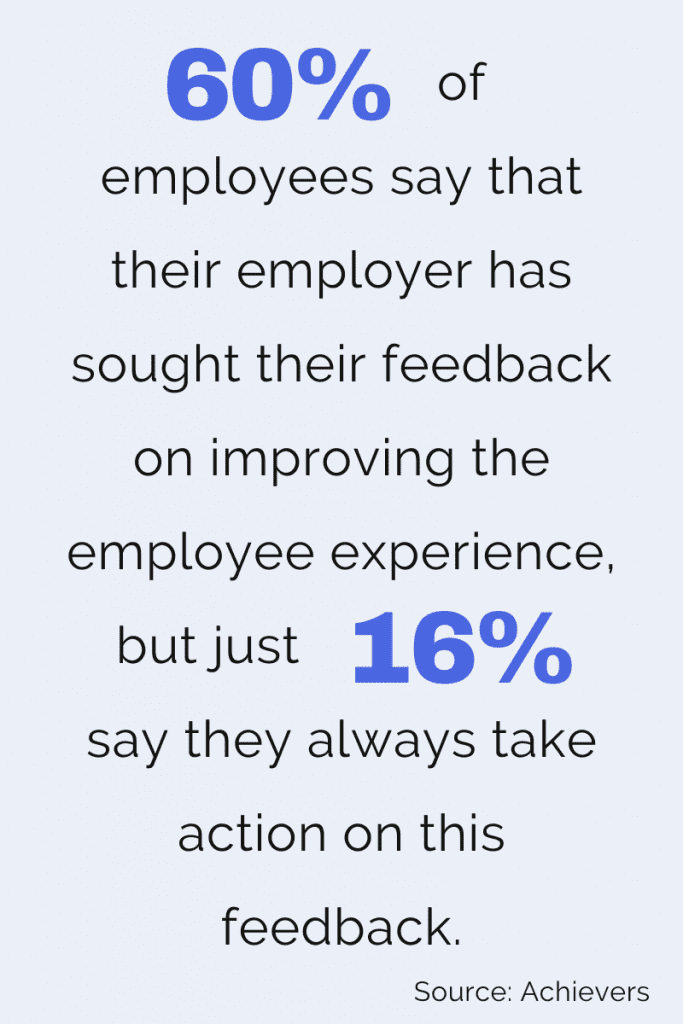Over half of employees are seeking new opportunities in 2021, upping the ante on employee experience.
By Marta Chmielowicz
As the world recovers from the challenges of the pandemic, employee experience is emerging as a key business differentiator. According to Achievers’ 2021 Engagement and Retention Report, an astonishing 52% of surveyed employees intend to look for a new job this year, compared to 35% in 2020. Additionally, only one in five (21%) respondents say they are very engaged and planning to stay with their company for a long time.
How can organizations maintain engagement as workers evaluate their employment options? Dr. Natalie Baumgartner, chief workforce scientist at Achievers, recommends focusing on employee feedback to build trust with employees.
Making Meaningful Change
The COVID-19 pandemic pushed many employees to the edge as they juggled the conflicting demands of childcare, work, and health while adapting to the remote environment. For many, the discomfort of the past year has resulted in a shift in expectations when it comes to their work life.
Employee feedback has become an essential tool for organizations looking to adapt their programs and policies to the changing needs of employees, but for many, feedback does not translate into action. While almost two-thirds of employees (60%) say that their employer has sought their feedback on improving the employee experience, just 16% say that action was always taken on this feedback.
“We know that employees are incredibly frustrated when an organization or manager asks them for feedback and then does nothing with that feedback,” says Dr. Baumgartner. “It actually has a detrimental impact on engagement, as you would expect.”
 To drive impactful change, Dr. Baumgartner recommends that HR leaders implement feedback tools that allow employees to offer feedback anonymously rather than directly to their manager. Previous research from the Achievers Workforce Institute shows that 77% of employees are more honest in surveys than in conversation with their managers. Always-on feedback tools, such as an AI bot that can be accessed anytime through the employee’s desktop, can complement recurring pulse engagement surveys, offering more color and context to results and helping managers address problems immediately.
To drive impactful change, Dr. Baumgartner recommends that HR leaders implement feedback tools that allow employees to offer feedback anonymously rather than directly to their manager. Previous research from the Achievers Workforce Institute shows that 77% of employees are more honest in surveys than in conversation with their managers. Always-on feedback tools, such as an AI bot that can be accessed anytime through the employee’s desktop, can complement recurring pulse engagement surveys, offering more color and context to results and helping managers address problems immediately.
These results can then be leveraged to create quarterly goals and micro-actions. “There’s data to suggest that there is very poor ROI on big engagement initiatives that come out of annual surveys,” says Dr. Baumgartner. “What we really need is to have real-time insights into the issues our employees are facing at the local level -at the team level -and empower managers to identify the top two or three micro-actions, meaning actions we can address this quarter, and prioritize those in collaboration with their teams.”
For example, if team members suggest that they are receiving inadequate learning and development, acceptable micro-actions might involve creating a one-page development plan for each employee that outlines two personal and two professional goals for the next quarter. The manager and employee can then be aligned on goals and can monitor progress on those goals together.
But for best results, Dr. Baumgartner warns that the micro-actions have to be unique to the specific problems the team is facing. “It’s really important for leaders and managers to have conversations with their team members and identify those few micro-actions that will solve that team’s problems. When we do that, it also increases the confidence of the team, knowing that their manager is really listening and going to help them solve the real problem that they’re facing.”
Responding to feedback in such a proactive way will build trust while allowing organizations to address the work-life balance issues facing today’s employees -ultimately motivating them to stay.














